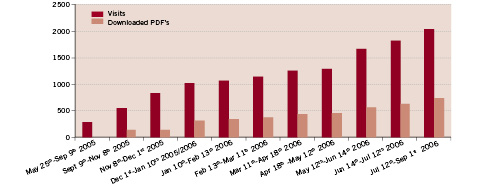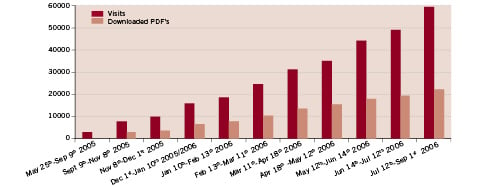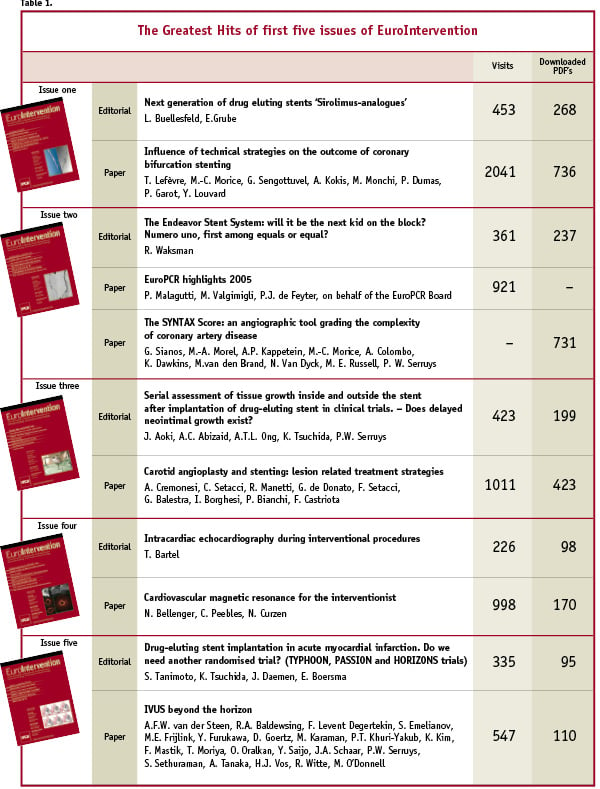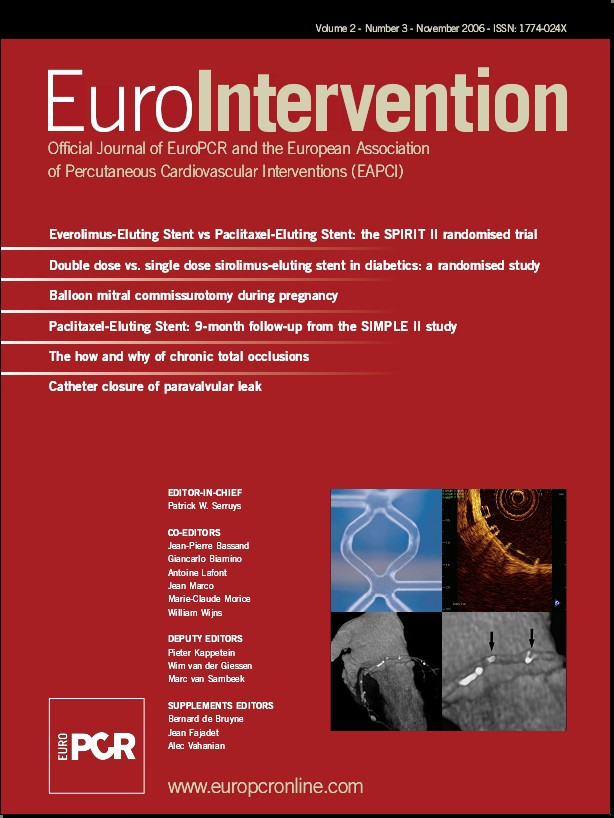Dear colleagues,
Time moves on, and we are now well into our second year, publishing the first edition of our journal with the collaboration of the new European Association of Percutaneous Cardiovascular Interventions, the EAPCI, which was just officially recognized at the ESC meeting in September. It was at that same meeting of the ESC – only a few weeks ago – that one of our highlighted articles, the SPIRIT II trial, was presented at a “Hot Line” session. This is ongoing, and here we publish the 6 month results concerning the XIENCE Stent. In relation to this paper, since the principal investigator is also the Editor-in-Chief, we appointed a Guest Editor, Valentin Fuster, to whom we submitted the paper, and who organized its review process.
In this issue as well, we are presenting a new section that fits well with the overall philosophy of the EuroPCR’s hands-on approach to our specialty. This section is entitled “How and Why” and in it you will be able to read how experts approach a particular problem. In this issue we start with CTOs.
There is also a special section in the vein of our previously published series on “Twenty years of stenting”, but this time from a “patients perspective”. And to be honest, we have a very personal interest here because it is an interview with one of our first stent patients, if not the first fully successful one, performed here in Rotterdam. Visit our website where you can actually see the interview and follow it in English.
Speaking about our website, as you know, one of the main concerns of an editor-in-chief, as well as of our editorial board, is to be able to truly assess whether the journal is read amongst experts in the field. The website is a great aid in doing this, and we have been pleased to see the interest that this site has generated, and what a good lightening rod it is for identifying what you, our public, are interested in. EuroIntervention Journal is fully and firmly embedded in the website structure of EuroPCR, thus benefiting from the wide range of electronic support that this well managed website provides.
As a cardiologist, clinician or scientist, we only consider Pubmed / Medline/ Index Medicus as the true proof that the journal is read, in circulation and is appreciated for its content. We would like to reassure you that we have taken all the necessary steps required of new journals to appear in this essential resource and expect to get an answer soon to our request that all the scientific papers published in EIJ be cited in Pubmed.
In the meantime, however, to get an overview, a sort of meta-analysis if you will, of what has been going on in our journal, we decided to consult how many hits the website had received, and how this broke down in terms of readership and article content. Below you will find 2 illustrations which show how popular the journal is and how frequently it is consulted.
To explain this, I will use a paper from the first issue published in May 2005. (Figure 1)

Figure 1. The Lefèvre paper was published online on May 25th, 2005, the PDF’s were accessible for download from September 21st, 2005 onwards.
Influence of technical strategies on the outcome of coronary bifurcation stenting
Lefèvre T, Morice MC, Sengottuvel G, André Kokis A, Monchi M, Dumas P, Garot P, Louvard Y. EuroInterv.2005;1:31-37
This is only one paper represented in the journal. The large majority are also submitted to this same method of scrutinisation. So it is no exaggeration to claim that the journal – in it’s entirety – has earned 76,228 visits and 19,587 downloads (counting up until the 1st September 2006 ). (Figure 2)

Figure 2. Cumulative visits and downloads per month till 1st September 2006 (exclusive the index page of each published issue).
How does each issue fare when we look closer at these statistics?
Naturally issue one, being the longest online (May 2005), has recorded a very healthy > 19,000 visits. Although obviously, each successive issue has spent less time on-line, issue five alone, online for only 4 months had in excess of 8,000 visits when we looked at the site. (Figure 3)

Figure 3. Total visits and downloads per issue till 1st September, 2006.
Our next chart shows what we will call our “Greatest Hits” of the first five issues (Table 1).

We have listed the best visited and most downloaded paper classified by issue. Despite the dominance of coronary stent related papers in our journal, a notable entry in these “Greatest Hits” is the carotid paper from Alberto Cremonesi. Also perfectly in line with the EuroPCR ethos of education, three papers significantly reflected this state-of-mind, namely the papers based on subjects such as “Intracardiac echocardiography” (T. Bartel), “Cardiovascular magnetic resonance” (N.Bellenger) and finally, IVUS (A. van der Steen).

